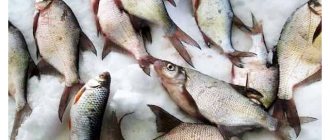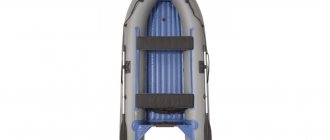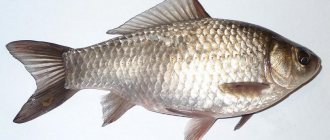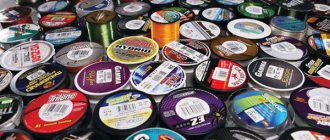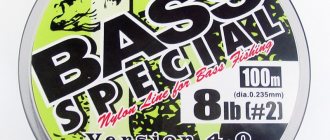fishing line
- one of the most important elements of any fishing tackle.
It serves as a link between the rod (fishing rod) and the hook with the bait. Despite its importance in gear, unfortunately, this is its most short-lived element. Fishing line
requires special treatment, both during use and storage. Fishing line, like no other element of gear, is subject to increased and seemingly contradictory requirements. For camouflage in water, for elasticity and greater capacity on the reel, it should be thinner. But on the other hand, it must withstand loads and not be afraid of moisture.
History of fishing line
History of fishing line
In fishing history, there are several options for making fishing line, each of which had a lot of shortcomings. Not a single material in ancient times met the requirements for fishing line today - maximum strength with low thickness and transparency.
The most popular material for making fishing line was horsehair.
. Since it was not always possible to find horses of a light color, dark horsehair was processed in a special way. It was washed thoroughly with soap, then dried in the sun, fading and losing some of its pigmentation.
After that, a fishing line was woven from the hair; there was a weaving method and a twisting method. The weaving method can be called more labor-intensive, but the resulting fishing line was twice as strong as that obtained by twisting.
In addition to hair lines, silk lines
. The strength of such a fishing line was sufficient for fishing small fish, but a silk fishing line quickly became unusable from contact with water. The most affordable option was fishing line, which was a thin rope woven from hemp thread. Only peasants caught fish with such a fishing line.
Another popular option was vein line
, which was created by special processing of a lump of silky thread extracted from the cocoon of a silkworm. Modern manufacturers are ready to offer dozens of options for synthetic fishing line, which differ in thickness, transparency and strength. However, the art of hand-braiding and twisting fishing line is still alive, and is used by experienced fishermen in their original fishing techniques.
Fishing line classification
- Monofilament.
This is a fishing line made from polyamide - traditional nylon with a certain strength and resistance at the knot and a high elongation coefficient. Soft elastic line fits well on the reel, therefore, it is easier to cast with it. It is used for rotating spinners (they float while flying) and for baits with a low specific density, such as wobblers (they need to be “accelerated” when casting). This line absorbs the jerks of the fish, easing the load on the reel mechanisms, but due to its softness it is prone to abrasion.
- Copolymer.
Copolymer lines are made from a mixture of several different polyamides. The process of drawing thread from such a material has a number of technological features designed to protect the surface of the fishing line (making it durable, including at the knot) and give it specific qualities, taking into account its use in certain fishing conditions. In general they are stiffer than monofilament. Suitable for jig spinning. With such lines it is easier to hook and they become less tangled. Note that the stiffer the fishing line, the more accurately it transmits all jerks, that is, the greater the load on the reel mechanisms and the faster its resource will be exhausted. If the fishing line is elastic, then the jerks are absorbed to one degree or another; if it is inextensible at all (such as braided), then you need to choose more reliable gear.
- High-copolymer.
The production process of these copolymer lines has an even more complex cycle aimed at improving strength, reliability and long-term preservation of the original characteristics in various weather and operating conditions. In order not to complicate the terminology and distinguish them from copolymer, we will use the name “high-polymer”. As a rule, a variety of highly specialized fishing lines belong to this class, because it is new technological processes that make it possible to give the fishing line very specific properties: the necessary refractive index or adhesion to water, the ability to sink quickly, not to lose its qualities when exposed to sunlight for a long time, not to freeze in winter and etc.
Materials
Traditionally, for thousands of years, fishing lines have been handcrafted from horsehair, silk, and, much less frequently, cotton or linen. In their manufacture, waterproofing impregnations were sometimes used. From about the 1850s, machines for tying fishing lines on an industrial scale appeared.
Modern fishing lines are made from polyamide materials, the main ones being: nylon, nylon, as well as polyethylene and fluorocarbon.
Nylon
Invented in 1937 by the DuPont laboratory (USA). It became the first and most widespread artificial material for the manufacture of fishing lines.
Light refractive index of nylon. - 1.52 (water - 1.3)
Capron
Nylon or Nylon 6 was developed in 1952 by IG Farben (Interessen-Gemeinschaft Farbenindustrie AG - Germany) to reproduce the properties of Nylon-66 without violating DuPont's patent for its production.
Nylon fishing lines are subject to aging under the influence of stress, water and ultraviolet radiation. The service life of nylon fishing lines does not exceed two to three years.
Polyethylene
Ultra-high molecular weight polyethylenes are used to produce multifilament scaffolds characterized by high strength[1] and low elongation. The first developments of this material were carried out in the sixties at the Dutch company DSM by Dr. Pennings.
The first artificial material used to make braided lines was Dacron. Subsequently, polyesters were replaced by the more advanced Kevlar. Since the beginning of the 90s, fishing lines made of the finest polyethylene fibers have appeared, devoid of the disadvantages of Kevlar. In Europe, the new material became known under the brand name DYNEEMA, and in America - Spectra. All so-called braided fishing lines are made from the same fibers; the differences lie in the method of joining (weaving) and the protective impregnations used.
Fluorocarbon
Fluorocarbon [2] was invented by engineers of the Japanese company Kureha (Seaguar) in 1971 for the needs of the oil industry. Fluorocarbon is a chemical polymer related to Teflon. It has extremely high resistance to aggressive environments - both chemical and physical. Fluorocarbon (PVDF) fishing lines do not change their properties when fishing temperatures change (operating temperature from −40C to +160C), are practically not subject to aging under the influence of ultraviolet radiation, that is, they do not require replacement during storage, do not become wetted or swell in water, and are resistant to abrasion. Fluorocarbon is 50% heavier than regular fishing line and 78% heavier than water. Therefore, it sinks 2.5 times faster than nylon, which is especially important for float and fly fishing.
Fluorocarbon fishing line is usually much stiffer than nylon, which can be both a plus and a minus depending on the fishing conditions. Fluorocarbon (PVDF) lines often have lower tensile strength than nylon lines of the same thickness. The production process of fluorocarbon is more complex than the production of nylon, which is reflected in the price. PVDF fishing lines are more expensive than nylon ones. Due to the latter circumstance, nylon fishing lines coated with fluorocarbon are produced. In this case, the reels have the designation: “coated with fluorocarbon” - “Fluorocarbon coated”.
The refractive index of fluorocarbon light is 1.42 (water is 1.3).
Thus, fluorocarbon lines are much less noticeable in the water than nylon lines. Comparative characteristics of fishing line materials
| Material | UV resistance | Resistance to swelling in water | Abrasion resistance | Extensibility |
| Nylon | low | average | average | high |
| Polyethylene | high | low | low | low |
| PVDF (Fluorocarbon) | high | high | high | moderate |
Types of forests
Types of fishing lines
Today fishing line is divided mainly into two types: monofilament and braided fishing line. Each species has its own special characteristics, which are selected according to the type of gear and fishing technique.
- Monofilament fishing line
, or as it is popularly called
monofilament line
, is made from nylon (polyamide). From the name it is already clear that this is a solid monolithic single-filament fishing line. It itself also has different properties, depending on the technology of its production. More elastic, soft ones are made from monofilament. This line fits better on the reel and, accordingly, contributes to longer casting of the bait. Mono lines are also made from a mixture of different types of polyamide. This type is called copolymer. It has great tensile strength and rigidity. The next type is copolymer. These monofilament lines are manufactured using complex high-tech processes. Due to this, they have different specific properties: sinking, resistant to ultraviolet radiation, etc. and a higher price.
- Braided fishing line
, or as it is popularly called braided line, is more durable than monofilament fishing line.
Therefore, it has gained more interest among most fishermen. From the name it is clear that such a fishing line is woven from a large number of fibers. This is how its best strength is achieved. Braid is further divided into two types. The first
is fibers or flagella woven together, and
the second
is fibers or flagella woven together and covered with a shell. The second type is visually similar to monofilament fishing line. Braided fishing line has low elasticity, high strength and softness. However, it has one drawback - the price. It is several times more expensive than monofilament due to the complexity of production. However, today production does not stand still and inexpensive braid for spinning rods is already being produced, which fully meets the stated requirements.
Copolymer line (copolymer) CO
Unlike monofilament, copolymer fishing lines are made from several synthetic polyamides (out of two), which ultimately significantly increases their rigidity and strength. Such products are widely used in those types of fishing where such characteristics come first, for example, in jigging using spinning rods. Copolymer lines practically do not tangle and do not form “beards”, and they also contribute to an increase in the number of successful strikes. Nowadays, multipolymer material, which is made from more than two polyamides, is widely used. Which further improves the performance.
The disadvantages of fishing lines from this group include a decrease in the wear resistance of the reel mechanism due to increased loads due to jerking fish and a higher price compared to monofilament fishing line.
Characteristics of fishing lines
Line strength
Strength of the
fishing line The fishing line is subject, on the one hand, to very strict requirements, on the other, directly opposite, almost incompatible requirements. It should be as thin as a spider's web and as strong as steel. Moreover, in some cases its strength and maximum rigidity are necessary, in others, on the contrary, its ability to stretch and absorb shock at the same steel strength is considered quite valuable.
High-quality modern fishing lines largely satisfy these requirements. Their strength is largely due to special coatings that are easily visible, especially on reels. The color of the vein wound on them shows whether the nylon thread is covered with something or not. As research by physicists has shown, the strength of a fishing line is determined precisely by the strength of its surface layer. Therefore, these technologies have made it possible to take a step forward in the creation of ultra-strong veins. Although these composite lines, consisting of plastic and a metalized coating, have some significant disadvantages, they are a big step in the right direction.
The strength of the fishing line can be significantly reduced - when constructing a tackle, knots weaken most types of fishing line, but this happens to varying degrees, depending on the structure of the vein and the type of knot. For example, the loss of strength of monofilament fishing lines and braided fishing lines when tying knots on them is simply not comparable. So, if at some nodes the monofilament loses up to half of its strength, then the braided material loses only 2-3%. Approximately the same ratio can be found in the strength values of the fishing line when using different types of knots. An incorrectly tied knot can reduce its strength by almost 70%!
It is important to use the vein in strict accordance with the other elements of the tackle and with the tasks assigned to it. We will talk about this in more detail in each individual case, but here we draw the attention of novice fishermen to the fact that in order to take into account all possible options for gear, fishing lines are produced by companies with diameters ranging from several thousandths of a millimeter, for example, 0.225 mm, 0.315 mm or 0.375 mm .
Line elasticity
The elasticity of a fishing line describes its potential to stretch under the influence of force. This parameter is very important, and all spinning players must take it into account.
A low-stretch line makes it possible to fish quite effectively from the bottom, because it makes it possible to “feel” the topography of the bottom of the reservoir, and, consequently, to correctly place the bait. The timeliness of recording the smoothest bites also speaks in its favor. This line is very good for catching pike perch and pike perch, as it makes it possible to hook large fish more reliably. However, a large number of failures when fishing for perch and erroneous bites when fishing for chub sometimes forces spinning anglers to “turn away” from the rigid fishing line. Practice shows that when using rods with a plastic, parabolic action, catching these fish is possible using braid.
Line color
Coloring of the fishing line
Modern judgments about the color of the fishing line are different than those that took place twenty-five to twenty-seven years ago. And in our time, attitudes towards this characteristic are varied.
The modern approach is based on special research programs that understand the spectrum of colors that are distinguished by fish of a certain type. In other words, for any fish you need to select a fishing line of a strictly established color.
Although the very fact of the existence of spectacularly colored and fluorescent fishing lines, which allows spinning anglers to more clearly record the most delicate bites, declares the existence of a completely different concept. Although, if we still proceed from transparency, then fluorocarbon fishing line is naturally the best choice.
Line softness
It is this characteristic (with equal diameters of the compared fishing lines) that makes long casts possible. Non-elastic, soft fishing lines are almost devoid of “memory”; they do not retain their spiral shape when dropped from the reel, and, consequently, the bait on such a fishing line flies further. Although the softer the fishing line, the more prone it is to curling. And this negatively affects its fortresses. Here it is worth taking a closer look at two characteristics of fishing line – softness and elasticity. The decrease in strength is especially noticeable when using elastic and soft monofilament with a diameter of 0.11–0.18 mm. When fishing with poorly made rotating spoons, such fishing lines become very twisted and, when wound tightly on a spinning reel, they shrink when they dry out.
As a result, the structure of the material is disrupted and, as a result, the breaking load is reduced. Naturally, with braid, which has almost zero elasticity, such changes occur much more slowly. In order to maintain the strength of the fishing line, it must be periodically untwisted.
When fishing on a river, you can simply release the line without bait into the current, which will spin it. You just need to make sure that the line running down under the influence of the current does not go down to the bottom and lift it up from time to time with a fishing rod. You can also stretch the fishing line on the shore. How often you do this is up to you, the main thing is to prevent the very tightly twisted line from drying out on the reel.
Wear resistance of fishing line
Wear resistance of materials
This parameter must be taken into account when deciding which fishing line to prefer for spinning. The level of wear resistance is an extremely important characteristic and therefore cannot be ignored. If the fishing line is any good, it will lose its quality after three to four hours of fishing due to the influence of ultraviolet radiation or other physical factors, such as mechanical influences.
As for the ultraviolet influence, modern technologies make it possible to produce a fishing line that retains its initial characteristics (primarily elasticity and breaking load) for 650–750 hours of fishing. Although mechanical factors that damage the fishing line are unlikely to provide an opportunity to verify this in practice, especially when fishing on fast rivers. To a certain extent, the wear resistance of a fishing line also depends on its outer layer, which is Teflon or similar coatings.
A smooth and dense surface prevents such negative aspects as water absorption (hygroscopicity) and, as a result, a low degree of adhesion to the water surface. On the one hand, all this improves the sliding of the fishing line along the locking rings of the rod and, therefore, interferes less with the casting distance, and its surface is also damaged to a lesser extent.
On the other hand, a small degree of adhesion to the water surface reduces the influence of the current on the fishing line, and this makes it possible to register weak bites, and also improves the ability to control the gear.
It is necessary to pay attention to another point. If the outer coating of a monofilament line is damaged, then the line becomes an order of magnitude less reliable, and we throw it away. For most braids, even disheveled ones, the breaking load decreases less noticeably. Although in this area the coefficient of friction increases sharply, which significantly reduces the casting range, and such a fishing line does not allow a light bait to descend to the required depth (conditions sometimes do not always allow the use of heavy baits, additional sinkers and transport floats for fishing). And then we are forced to cut off the damaged piece of fishing line. Therefore, it is more profitable to buy multi-filament fishing line not in hundred-meter pieces, but by filling the reel spool directly from the reel. In some stores, they sell fishing line this way, reeling it in and pricing it by meters from large spools on which 1,500 yards of braid are wound.
Specific gravity of fishing line
Specific gravity of the materials from which the fishing lines are made
When you fish with a float rod, the fishing line located on the water surface moves under the influence of the wind and thereby pulls the equipment along with it. This sometimes excludes the possibility of using match gear when fishing from the shore. (When fishing from a boat, you can position your back to the wind at all times.) In order to prevent the impact of air flow on the fishing line, fishermen lower it under water. But for this, a cast is made further than necessary. Next, lowering the tip of the fishing rod into the water, making several vigorous turns of the reel handle, pull up the tackle, trying to immerse the part of the fishing line located on the surface of the water between the end of the rod and the float.
Still, when casting long distances, this action does not work all the time, since the force of the water surface prevents the line from sinking. She simply slides down the surface of the water. Accordingly, the distance at which fishing is possible decreases. To increase this distance, sinking lines are created. Such fishing lines have a higher specific gravity than conventional polyamide fishing lines (1.14–1.15). Today, combined fishing lines with two or three layers with different coatings are produced. In general, modern sinking fishing lines can be divided into fishing lines with a distinct ability to submerge and conditionally sinking ones.
Fluorocarbon fishing lines have a fairly high specific gravity, and therefore a demonstrated ability to submerge.
Fishing line - types and classification
Today's variety of fishing lines offered in fishing stores can lead any angler to a dead end. How to make the right choice? Otherwise, you can simply forget about effective fishing and the final result.
It should be remembered that different fishing gear and methods require the use of fishing line with certain characteristics. For example, when fishing with a spinning rod, one is used, but for bottom fishing, a completely different one is suitable. Even when catching different fish with the same tackle, the requirements for the fishing line are different.
Fishing lines can be monofilament (or monofilament ) and multifilament (braided). In the first case, it is made of polyamide (nylon). Thanks to the material, the fishing line is elastic, soft, and fits freely into the reel. It is very good for long casts.
Fishing lines made from a combination of several types of polyamide are called copolymer. They are characterized by increased strength and rigidity.
Recently, another type of fishing line has appeared on the market - high copolymer. They are manufactured using high-tech processes, which gives them some specific properties. For example, sinking line (Sinking Line) is resistant to ultraviolet radiation, etc.
Multifilament fishing line quickly found its place on the market. True, the now familiar expression “braid” does not always correspond to the name. Not every model is like this. There are only two similar varieties: classic braiding , consisting of flagella woven together, and sheathed braiding . For the most part, all types of braided fishing line are distinguished by high strength, low (almost zero) elasticity and pronounced softness.
Now about the characteristics. One of the first parameters that our (and only our) angler looks at is the diameter of the fishing line. It is believed that it determines the breaking load, elasticity and softness of the product. In addition, selecting the optimal thickness is one of the ways to “revive” the bait. This characteristic is also reflected in the casting distance.
Most fishermen pay no less attention to the breaking load However, you should be aware that the figures stated on the packaging are always overestimated. When choosing a fishing line based on its breaking load, you should pay attention to its preservation in the knots, since its presence in any gear significantly weakens it. However, there is also a positive side to this, since when caught, the line will break in the intended place.
The elasticity of the fishing line shows its ability to stretch. This parameter is especially valuable for spinning players. A low-stretch fishing line, for example, is very convenient for fishing from the bottom of a reservoir, since it helps to “feel” the bottom topography. With its help, pike and pike perch are caught well. However, to catch perch, chub or ide you will need a softer model.
Fans of long casting always pay attention to the softness of the fishing line . In these models, there is practically no such side effect as “memory” - this is the name given to the ability of the fishing line to maintain a spiral shape, which greatly shortens the length of casts.
Recently, modern fishermen have begun to pay increased attention to coloring . This is especially true for spinners. Moreover, the expression “camouflage coloring” is considered irrelevant. On the contrary, today's market is overflowing with bright and even luminescent fishing lines. They significantly help the spinner to clearly register the most delicate bite.
The wear resistance of the fishing line is also considered an equally important element in the characteristics of the fishing line. The same spinning players pay special attention to it. After all, their fishing line is constantly exposed to mechanical stress, be it moving along the bottom, contact with the side of the spool, roller, line layer, underwater obstacles, etc.
Happy fishing!
Manufacturers of fishing lines
Despite the many brands under which fishing line is sold, the range of manufacturers is quite limited.
Most of the large companies offering high-quality fishing line just unwind it, or order it directly from the manufacturer and then offer it to customers under their brand. The production of fishing lines is mainly carried out by companies in the USA and Japan. Fishing Line Manufacturers
| Manufacturer | Location | Trademark | Material |
| Kureha Chemical Industries | Japan | "River", "Seaguar" | PVDF (Fluorocarbon) |
| Yotsuami | Japan | "Giga", "Nitron" | Nylon, PVDF (Fluorocarbon) |
| Morris | Japan | "Varivas", "Avani" | Nylon, DYNEEMA |
| Sanyo | Japan | "GT-R", "Super Cast PE" | Nylon, PVDF (Fluorocarbon), DYNEEMA |
| Duel (Yo-Zuri) | Japan | "Fuzz", "X-TeX" | Nylon, PVDF (Fluorocarbon) |
| Toray | Japan | "Solaroam", "Bawo", "Super Hard", "Sea Bass" | Nylon, PVDF (Fluorocarbon), DYNEEMA |
| Sunline | Japan | "Machingun", "FC", "Shooter", "PE" | Nylon, PVDF (Fluorocarbon), DYNEEMA |
| 3M Company | USA | "Scientific Anglers" | PVDF (Fluorocarbon) |
| DuPont | USA | Nylon, PVDF (Fluorocarbon) | |
| Bayer | Germany | PVDF (Fluorocarbon) | |
| AQUA | Russia | "AQUALON", "PROFIX", "PE ULTRA", "NL ULTRA". | DYNEEMA, HMPE |
| Wedgefiber | Russia | "Klinskaya fishing line" | Capron |
Line storage
Now the issues of fishing line storage are no longer relevant. Previously, when good fishing line could only be purchased with Vneshposyltorg receipts, the supply of fishing line was sealed and stored in the refrigerator for years. Now there is no need to stock up on fishing line for the rest of your life; it’s easier to go to the store and buy fishing line of the diameter and quality that is required for a particular fishing.
However, there is no need to store the fishing line in the sun or on a central heating radiator. Most of all, fishing line is afraid of direct sunlight, namely its ultraviolet component. This is why good manufacturers and suppliers package each spool of fishing line in individual opaque packaging.
"Memory" of the fishing line
Line memory is a concept that you have probably come across before. After long-term storage on a reel, the lowered fishing line curls into rings; it seems to remember the shape in which it was stored. This phenomenon is perceived extremely negatively by fishermen. Persistent memory, from the point of view of an angler, is a disgusting property of a fishing line, which is almost impossible to fight.
Unfortunately, the best types of fishing lines, which are super strong, are the most vindictive. In order to at least to some extent reduce the consequences of this phenomenon, increased attention should be paid to the storage conditions of coated veins. After each fishing trip, they need to be rewound onto reels and reels that have different shapes and sizes. A good effect is obtained by winding such lines on a reel not in a circle, as usual, but in a figure eight.
Meaning of the word fishing line
Examples of the use of the word fishing line in literature.
You and you,” Aidar pointed at the two nukers, “drive them into that wood over there and wait for us there.”
Since the lure needed to be released, I let go of the line, went around the bay and pulled the net to the shore.
In short, we overtook the fast guys,” Dima finally began in a tone as if he had just taken part in a sprint race, “we ran about half a kilometer along the fishing line and almost jumped out to the Landfill.
If only you, Marya Ivanovna, would go to the forest, pick berries, and make jam for your beloved grandson!
Cypress trees, eucalyptus trees, dark brown mangroves and other moisture-loving plants formed a secluded forest on the outskirts of the city.
After some time, either the angler had to make a mistake in his movements, since overworked muscles were already refusing to serve him and the fishing line had to break, or the tarpon had to submit to the ragged rhythm of learning and obediently freeze at the end of the fatal thread, waiting until his body a prison will be stuck.
Near the drilled hole, a small mound of wet ice crumble is piled up, in which the pole of the rod is secured with a slight tilt forward so that the line wound from the reel passes through the center of the hole.
A forest with butterfly butts, twisted, gnarled, corroded by mold, lingonberries withered, small, and all a delicacy, all joy and salvation from scurvy.
You put a raisin on the hook, and then everything is like fishing, although the line should be about fifty yards long.
Ilia Brush, showing Mr. Yeager the hooks that he had tied one above the other to the Florentine vein line, said: “You see, Mr. Yeager, these are hooks number eleven, with a very thin shaft.
He tied a green Cadiz spinner fly to the line and fished for a couple of hours, landing a rainbow trout and two small striped bass on a barbless hook.
In this case, you just need to ensure that the line comes off the reel unhindered after the catch and check in the evening whether the hole is reliably covered with snow.
Yesterday's search with a bloodhound led from a dacha in a birch forest to the Krestovka River, where it ended: here the killers apparently got into a boat.
On the other side of the highway, in some places approaching the road closely, copses and bushes scattered widely, and in the distance and somewhat to the side of the river floodplain darkened the familiar pine forest that had greeted them so unkindly one day.
Without showing the slightest displeasure, she allowed herself to be caught first by a loop of fishing line, then by a special stick with a forked end, found herself on and under rocks, crawled endlessly through thickets of cacti and other inconvenient thorns, and allowed herself to be picked up.
Source: Maxim Moshkov library

